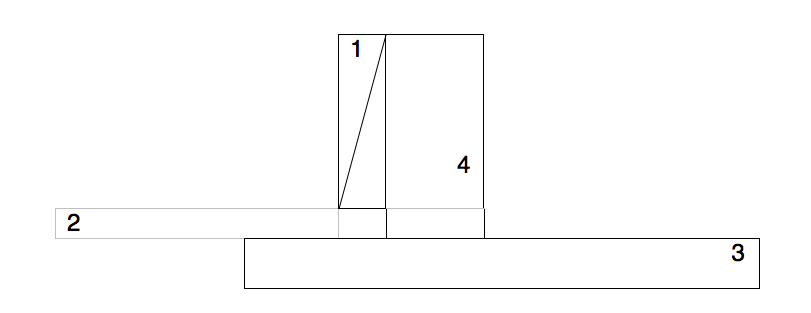
One of my emerging specialities as a musician who teaches the Alexander Technique is helping other musicians improve their sense of time.
In truth, many problems that musicians have with their skill and coordination are fundamentally problems of time perception and rhythmic conception (rhythmic imagination, feel, etc.)
Often musicians don’t recognize this truth so readily, sometimes thinking that their problems with technique and articulation are simply “finger dexterity” issues, or “strength issues”, etc. In short, purely “physical ” issues. (And sometimes they are for sure, but not nearly as much as you might think.)
Part of my job with these musicians is to help them (through direct experience) discover on their own the connection between their technical struggles and their problems with time perception.
But when a musician comes to me knowing full well that they have issues in with time and rhythm, I too often find that their strategies to remedy their problems on their own have one thing in common that is fundamentally interfering with their progress.
In essence, they are thinking about time “accuracy” in an entirely abstract manner.
As I ask them questions, I often find they are also spending lots of hours trying to improve their time perception by practicing exercises that have little or no actual musical meaning.
Some of these exercise aim for what I call “pulse memorization”.
An example of this might be to count out loud in 4/4 with the metronome clicking quarter notes until the tempo seems firmly established in your mind. Then turn the metronome off and clap, count or play the quarter notes for a minute or so, then turn the metronome back on to see how accurate you were in your “memory” of the original pulse.
Another example might be the classic “canceling the click” exercise with the metronome. If you don’t know this one, it’s where you clap with each click of the metronome, attempting to “cancel” (you can’t hear) the click because you’re right in the “center” of the beat.
To be clear, I don’t think either one of these exercises is a bad thing to do, nor a waste of time (no pun intended!)
I simply think that they have limited value.
You see, both of these exercises are lacking in any kind of musical context.
When I coach a musician who is struggling with time, I might have them work on exercises like this in a sort of remedial way in the beginning to help them begin to recognize certain habitual tendencies in perceiving time.
But what I attempt to establish from the beginning with the musicians that I’m coaching, is to let them discover that they already have a strong sense of time. It’s really a matter of teaching them to access it more readily by changing how they think about time.
This is where meaning comes into play.
You see, even the most “time challenged” (or “rhythmically challenged”, if you prefer) person has one thing they do all the time that has rhythmic pulse and regularity: They speak.
Yes, words not only have meaning, but also a rhythmic component that is conditioned by the structure of the language itself, and any kind of accent attached to the spoken langauge. Linguists refer to the this as “prosody”, or the natural “music” within any language. (When the musicians I coach discover this truth, their confidence and skill expand exponentially!)
So rather than having a musician start remedial work on improving time with an “abstract” activity, like cancelling metronome clicks, I might have them notice rhythmic patterns in how they speak, both in individual words, and in phrases/sentences. This creates a “context” for their rhythmic expression.
A simple exercise to discover this would be to speak words of various syllable lengths with the metronome click, noticing how “regular” and rhythmic the words are, how they line up so easily and naturally with the metronome click.
It is virtually impossible to speak in any kind of understandable way without the element of rhythm.
You think it’s difficult to “feel” and conceive of a quintuplet?
As far as your brain is concerned, it actually isn’t.
If you repeat the word the five-syllable word, “fundamentally” over and over, back to back, you’ll find that quintuplets are quite easy.
That’s because this word has a meaning (in this case, the adverb form of the word “fundamental”, meaning “essential”) that is inextricably linked to it’s sonic/rhythmic expression. Sound, rhythm and meaning work together, in an immediately integrated manner.
It’s simply wired into your brain that way. And though it has less meaning out of context here (repeating it over and over) than it would in the context of a sentence, it has more meaning to you than trying to “imagine” the subdivisions of the quintuplet.
You see, whether you’re playing your instrument, or speaking, you’re always doing one fundamental (there’s that word again!) thing: You are connecting meaning to movement.
The meaning is to be found in the intention, and the movement is the manifestation of that intention.
When you speak you move (your vocal mechanisms certainly do, at least). When you play music you move. It’s impossible to have either of these without coordinated movement.
I’ll say it again: Movement is the manifestation of intention.
Even a cursory understanding of how the brain is involved in making music makes it easy to understand why dance is so inextricably connected to music in virtually all cultures. Dance is the psycho-phyisical whole musical impulse and expression. Context provides meaning, which turns into movement.
Another way to turn the abstract idea of “pulse memory” into something meaningful is to always imagine tempo and rhythm within a more specific musical context.
I remember once taking a class to become certified in CPR (cardio-pulmonary resuscitation), where we had to learn to give chest compressions with our hands at the tempo of 100 beats per minute.
The teacher told everybody in the room to sing or “imagine” the disco classic by the Bee Gees called, “Staying Alive”. (All the class participants were easily old enough to know this song.) Sure enough, the whole room is creating chest compressions with considerable rhythmic evenness and unison.
Meaning informs movement.
So if you’re working to improve your time, or are helping other musicians how to do so, bring the abstract into meaning as much as possible. Use your imagination.
You don’t have to use just the metronome for a time source when practicing, you know. Using backing tracks, drum loops…anything the establishes context and broadens meaning.
And instead of focusing exclusively on the “clicks” whenever using the metronome as you practice, imagine how you would like to express each phrase relative to the clicks. Let each phrase come vividly to life in your mind before you start to play. It is the music between the clicks that is the most meaningful, and the most beautiful.





